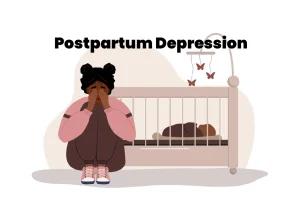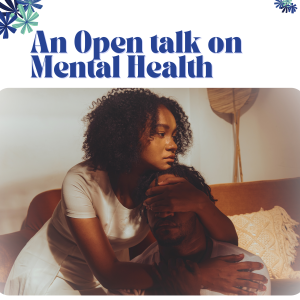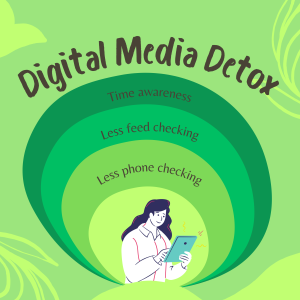It is important to explain some key expressions for easy flow of the discuss, such as :
- Definition and explanation of the topic.
- Relevance of drug in the society &workplace.
- Relevant statistics/pattern of use in the society
- Way forward.
- Definition and explanation of the topic.
- Action or measures taken concerning drug/substance abuse especially with the intention of putting things right.
- Substance or drug use disorders — are patterns of symptoms resulting from the use of a substance despite experiencing problems as a result of using the substance.
Depending on the number of symptoms identified, substance use disorder may vary from moderate to severe.
- People with drug use disorders need treatment, health and social care and rehabilitation.
- Harmful use of substances and dependence are features of drug use disorders.
- To differentiate between drugs and substance: substance is generally preferable to the word drug, because drug implies a manufactured chemical, whereas many substances associated with abuse patterns occur naturally (for example, opium) or are not meant for human consumption (for example airplane glue).
Relevance of drug in the society & workplace.
In almost every part of the world some drugs or others are used
- To facilitate social relations,
- Mark festivals or enhance religious rituals.
- Alcohol is the most widely used and misused drug, but other forms of drugs misuse are not drugs misuse are not new.
In considering the consequences of drug use, it is helpful to differentiate between
- the physiological processing (pharmacology) of the drug,
- the hazards inherent in the route of administration,
- The dose and frequency of use and
- The health and personality of user.
Among other crucial consideration are:
- The setting in which the drug is taken,
- the immediate surroundings,
- the presence of friends, their attitudes and expectations,
- the culture and folklore surrounding the drug as well as the legal sanctions of its use.
Drugs regarded as hazardous and illegal in one culture or time in history have been condoned or even promoted in another.
EFFECT OF DRUGS ON THE SOCIETY
- It is almost impossible to calculate the effect of illegal substance use on society. The effects are various and widespread and may take decades to reveal themselves.
- For instance, people whose parents took illicit substance have a greater chance of developing both physical and psychological difficulties, which will have an impacts on the fabric of society as measured by education, employment, and socioeconomic levels in the population.
However, considering the decadence of drug abused in the society, the Government adopted a pragmatic approach to solve the problem with a survey that provides the baseline needs for the design and implementation of effective prevention, treatment and care services
In addition to the above implementation the aim of the survey also included
- The target to reduce the demand for drugs.
- To prevent the morbidity and mortality attributable to drug use in Nigeria.
The results of this survey highlighted a considerable level of past-year use of psychoactive substances in Nigeria, in particular the use of
- cannabis,
- the non-medical use of prescription opioids (mainly tramadol, and to lesser extent codeine, or morphine) and cough syrups (containing codeine or dextromethorphan).
KEY FINDINGS
- In Nigeria, one in seven persons aged 15-64 years had used a drug (other than tobacco and alcohol) in the past year. This amount to14.4 per cent (range 14.0 per cent – 14.8per cent), corresponding to 14.3 million people
- Among every 4 drug users in Nigeria 1 is a woman, this amount to 3.4 million women
- The highest levels of any past-year drug use was among those aged 25-39 years
- 1 in 5 persons who had used drugs in the past year is suffering from drug user disorders.
- Cannabis is the most commonly used drug. An estimated10.8 per cent of the population or 10.6million people, had used cannabis in the past year.
- The average age of initiation of cannabis use among the general population was 19 years.
- Cannabis use was 7 times higher among men (18.8 percent among men vs. 2.6 per cent of women) while the gender gap in the non-medical use of pharmaceutical opioids (such as tramadol) was less marked (6 per cent among men vs. 3.3 per cent among women).
- An estimated 4.7 per cent of the population, i.e. 4.6million people had used opioids (such as tramadol, codeine, or morphine) for non-medical purposes in the past year.
- The misuse of cough syrups containing codeine occurred in 2.4 million people that is 2 percent of adult population and occurs in almost the same proportion between male and female.
- Geographically, the highest past-year prevalence of drug use was found in the southern geopolitical zones compared to the northern geopolitical zones,( 18.1 to 11.8)
Most of the high-risk drug users considered it was difficult to access drug treatment. The cost of treatment and stigma attached to drug use and seeking treatment were cited as the primary barriers in accessing or availing drug treatment services.
- Yobe, Imo, Bayelsa, Rivers and Lagos States were ranked as “the states where it was more difficult to access treatment or drug use disorders”.
Nearly one quarter of high-risk drug users had been arrested for a drug-related offence such as:
- possession of drugs,
- Theft
- Sexwork
- Burglary
- And shoplifting
THE WAY FORWARD
- Considering the extent of non-medical use of pharmaceutical opioids, tranquilizers and cough syrups among the adult population, it is important to ensure the availability of these drugs for medical and scientific purposes. it is imperative to address their diversion from licit channels as well as their illicit production or availability in the illicit markets in the form of spurious or fraudulent medicines.
- Programmes for the prevention of drug use, treatment and care of drug use disorders, and prevention and care of HIV, hepatitis C and other infections among high-risk drug users need to be upscaled with a wider geographical coverage of those interventions.
- The cost of treatment itself, limited number of interventions provided and
- the stigma attached to drug use are major impediments in provision of quality drug treatment services that can cater for a large segment of the drug using population in the country.
- As a priority in the country there is need to ensure availability accessibility, and coverage of quality and evidence-based effective treatment and care services for people with drug use disorders.
- This is to close the major gap in the non- existence of ideal and adequate drug treatment services in the country.
- The goal of such treatment is to reverse the negative impact that persisting drug use disorders have on the individual and to help them achieve as full recovery as possible from the disorder and to become a productive member of their society.
- In Nigeria another area of consideration is to develop gender-specific treatment programmes that would take into account in their design and delivery of services among other issues, sexual and reproductive health, social welfare, and childcare needs unique to women.
It is pertinent to address the issue of drugs among younger age group, though the target audience is working class, it is the age bracket to which our children fall that are more susceptible to drug abuse issues.
Prevention of drug use aims to help people, not only those of younger age, to avoid or delay the initiation of use of psychoactive substances, or, if they have already started, to avert the development of harmful use and substance use disorders.
- Effective prevention involves the positive engagement of children, youth and adults with their families, schools, workplace and community.
Another area of focus are garages and road side sales of different liquor in the guise of native/herbal preparations for various ailment, there is hardly any condition they don’t have their preparation for. Both sellers and buyers capitalize on the ignorance of one another, the buyer fell a victim of the claim of knowledge of various herbs and their purpose by the seller.
Alcohol related problems
For Alcohol related problem prevention should be better than cure.
- Because efficacy of treatment is uncertain.
- Mild to moderate drinkers are more involved in criminal act compared to excessive drinkers in alcohol related crime.
- Prevention is most visibly effective when a specified effect can be traced to a cause e.g drink-driving and road accident
Control relies on three strategies
- Control of availability
- Education about sensible use
- Providing alternative pursuit
- Control of availability/prohibition
The best control is prohibition but prohibition has its shortcomings such as:
- It can only last for a while
- Difficulty with enforcement
- Loss of tax revenue
- Growth of smuggling and illicit production of what may prove to be lethal brews.
To control availability the following will be considered;
- Restrict permitted hour of sales
- Ban in some zones
- Minimum age of alcohol handling
- Restrict advert-/which has been claimed to have adverse effect on employment and tourism
- Education about sensible use
Should take into consideration;
- Medium
- Audience
- Message
Target group include
- General public or specific segment of population e.g
- school children,
- elderly or ethnic minorities,
- pregnant women
- drivers
- others in hazardous occupation.
Education in school in school is not enough, should start from home.
Some of them know about alcohol from age six onward and their attitude towards drinking changed markedly between 11 and 14 due to peer group and influence.
- Providing alternative pursuit
Promotion of low alcohol beers and wine has proved helpful, other leisure pursuit are encouraged and other non-alcoholic beverages are encourage
SECONDARY PREVENTION
Aims to prevent the further progression of a condition.
- This is to identify and treat cases at an early stage,
- Symptom free excessive drinkers see little reason to change their habit.
- Such individual could be educated and persuaded to cut down excessive drinking by a primary care worker.
- A number of questionnaire (e.g AUDIT and CAGE) could be used for the assessment of impact of drinking in an individual like this.
CONCLUSION
- Finally, the drug use survey has provided a comprehensive picture of the extent of drug use and related harms among the adult population in Nigeria.
- However, there is a need for a mechanism such as the establishment of a drug observatory that can regularly collate data and analyze the drug situation in the country to further inform policy and programme development.
- The drug observatory could regularly monitor, through established indicators of drug use and supply, the emerging new drug threats, the implementation of regular drug use surveys in the general population and among youth, analysis of patterns of drug use among vulnerable population groups, and the monitoring of the extent and quality of responses to address the drug situation in the country.






